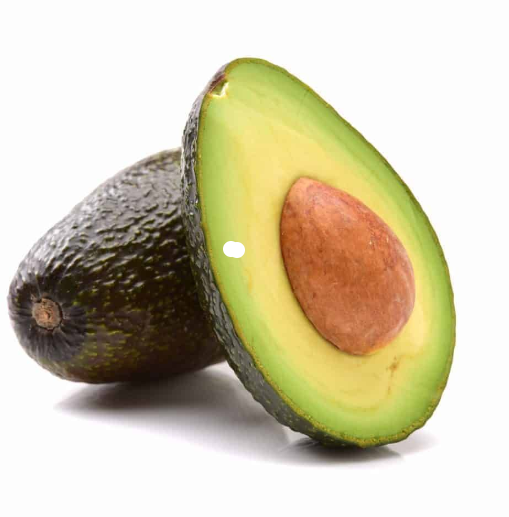The Avocado Pear is very popular and can identified with different names which include:
Preferred Botanical Name: Persea Americana
Preferred Common Name: Avocado pear
Local Common Name:
- Ibibio: Eben Mbakara , among others
About Avocado Pear
Persea Americana is the botanical name of avocado pear. It is a perennial plant believed to have originated in Mexico and is classified as a member of the flowering plant Lauraceae. Avocado fruit is botanically known as a large berry containing a single large seed.
Persea Americana is cultivated mostly in the tropics and Mediterranean climates. Avocados are green-skinned, pear-shaped, egg-shaped, or spherical-shaped. They have greenish or yellowish butter-like flesh.
Propagation of avocados occurs through grafting; they are self-pollinating and soften off trees. You can use it to prepare salads or desserts as some countries do. Avocados have many nutritional benefits and contain vitamins like thiamin, riboflavin, and vitamin A.
Some varieties of avocado flesh contain about 25% monounsaturated oil. Their trees are usually long, and their leaves spread 10-30 cm (4-12 inches). The fruits are green to dark purple with a long slender neck, and the outer skin is sometimes woody and coarse in texture.
Nutrient Composition Of Avocado
The nutrient content in 100g of avocado pear are:
- Calories 160
- Total Fat 15 g
- Saturated fat 2.1 g
- Polyunsaturated fat 1.8 g
- Monounsaturated fat 10 g
- Sodium 7 mg
- Potassium 485 mg
- Total Carbohydrate 9 g
- Dietary fiber 7 g
- Sugar 0.7 g
- Protein 2 g
Medicinal Properties And Uses Of Avocado
- Avocados are a good source of potassium. Potassium is an essential mineral; it supports healthy blood pressure.
- Avocado oil is rich in monounsaturated oleic acid. Oleic acid is a fatty acid that improves heart conditions by lowering cholesterol and lessening inflammation.
- Avocados are high in fiber and low in carb; they support weight loss and promote metabolic health.
- Eating avocado or oil with vegetables increases the number of antioxidants you take in.
- Antioxidants like lutein and zeaxanthin are in avocados and are important for eye health; they lower eye conditions like macular degeneration and cataracts.
- Avocados contain nutrients that may help prevent prostate cancer and lower the side effects of chemotherapy.
- Symptoms of osteoarthritis can be greatly reduced with avocado oil and soybean extracts.
- Avocados are very satisfying; they keep you full, thereby causing you to eat fewer calories.
- Avocados mix well with other ingredients due to their creamy, rich, fatty texture.
How To Grow Avocado Pear
A detailed explanation of how to grow avocado is written below:
Yield Information Of Avocado Pear
At 5-7 years of age, avocado trees can produce between 200-300 fruits per tree. Avocado trees bear fruits alternatively; they may produce large amounts in one year and produce small amounts in the next year. Many factors affect the yielding rate of avocado trees.
Nursery And Transplant Requirements Of Avocado Fruit
It is best to transplant the seedlings from the seedbed to the nursery rows before they grow too large and have developed a heavy root system. To transplant:
- Dig a hole three to four times the diameter of the container your seedling came in and three times deep.
- Clear the planting site; remove grasses and roots around the planting hole.
- Fill the hole back with the dirt you removed. Do not add compost, topsoil, or fertilizer.
- Remove the tree from the container with care because the root system is sensitive, and you want to ensure that you do not disturb it when transplanting. Gently place the plant into the hole.
- While placing the tree, ensure that the top of the soil surrounding the root ball is at the same level or a little above the surrounding soil level.
- Gently tamp the soil into the hole with previously removed soil and fill in around the roots.
- Add a thick layer of coarse mulch and water deeply right away.
Soil And Sun Requirements Of Avocado Pear
Avocado’s soil requirement is deep, fertile, well-drained, and humus-rich soil. Soil pH between 5.5 and 7.0 is best suitable for planting avocado. Too wet soil causes root rot in the avocado plant. Use a good quality, free-draining potting mix for avocados growing in the pot.
Before planting, mix the soil with well-aged cow manure and blood and bone. Do not plant avocados near each other because they require full sun; they should not be crowded.
Plant avocados sheltered from prevailing breezes or wind. Avoid planting avocados in low spots where cold air can settle.
Watering Requirements Of Avocado Pear
Avocados require a large volume of water to survive and produce fruits. A mature avocado tree needs about 40 to 50 inches of rainwater per year. Water young trees frequently to establish a strong root system. Adult trees require less water.
Planting And Spacing Requirements Of Avocado Pear
The spacing requirement for avocado trees is 25 to 35 feet apart. They grow tall to about 20 to 60 feet and 25 to 35 feet wide. Avocado trees are versatile; they adapt to soil types like red clay, sand, lateritic soils, volcanic soils, or limestone.
Maturity And Harvesting Of Avocado Pear
Avocados will ripen when they are no longer attached to the fruit due to an inhibitor in the fruit stem. Budded avocado trees will bear fruits within four years, while it will take five to seven years for those that are planted directly to begin to bear fruit.
Ready-to-pick avocados will change color completely. Purple or near black varieties will deepen color when ripe. Green varieties will change their brightness to dull and later to a yellowish tint when ripe.
To test for the maturity of the fruit, pick fruit with a short stem attached to it, then place it on the counter for a few days. The fruit will be mature and ready to pick if the stem does not wilt or turn dark.
Avocados get softened off the tree, and it usually takes three to eight days to become soft. Refrigerating fruits will slow the softness of fruit; instead, keep them at room temperature.
To harvest avocado fruits, do not pull the fruit; instead, clip or cut the fruit off the branch of the tree with a bit of stem attached to it. Use a pruner or shear to harvest.
Storage Of Avocado Pear
You can store the fruits for a few weeks at 42° C and above. They can be stored on the trees until it starts falling off. Avocados can also be frozen, but you have to puree them first; add lemon or lime juice, then pack in containers and freeze.
Diseases And Pests Of Avocado Pear
Diseases and pests affect the avocado plant; some of them are:
Algal Leaf Spot
The alga causes algal leaf spots, and symptoms include
- raised, orange-red spots on both upper and lower surfaces of leaves
- spots may coalesce to form irregularly shaped patches
- spots may also be present on twigs and branches
- when the surface of the spot is scraped away, a gray to dark necrotic crust is visible.
Management Of Algal Leaf Spot
- Algal leaf spot is managed by pruning and fertilizing trees to promote their condition.
- Clear the weed around the tree base.
- Widely spaced trees during planting to increase airflow around the trees.
Sunblotch
Symptoms include red, yellow, pink, or white streaks running the length of young stems; white, yellow, or red blotches on fruit.
Management Of Sunblotch
Frequently sanitize all pruning equipment with disinfectant; plant only certified nursery stock
Black Streak
Symptoms are:
- elongated black streaks on bark
- cankers parallel to the growth of limbs
- black blotches with distinct margins on greenwood
- cankers on bark cause cracks that ooze sap
- removal of bark over cankers reveals dark discoloration underneath.
Management Of Black Streak
Avoid stressing trees by following good fertilization and irrigation practices
Persea Mites
Arachid causes Persea mites. Symptoms include:
- Leaves from trees begin to drop, and defoliation occurs, causing the exposed bark and fruit sunburn.
- The undersides of the leaves and fruit surface begin to develop circular to chlorotic brown spots caused by mites.
- Dense colonies of mites produce silk webbing, which may be a silvery spot.
- The cluster of mites can cause that tree canopy to appear lighter in color.
Management of Persea mite
You can manage Persea mite by properly fertilizing, pruning, and irrigating to prevent the tree from stress which can make the tree liable to mite attack. Severe infestations are treated with chemical and organic control methods like horticultural oil.
Conclusion
Renowned for its luscious texture and bold taste, avocado pear boasts an array of nutritional benefits. Bursting with heart-healthy monounsaturated fats, this superfood aids in lowering cholesterol levels and potentially protecting against heart disease. Additionally, it serves as a fantastic source of potassium, crucial for maintaining healthy blood pressure and promoting optimal cardiovascular well-being.
Moreover, avocados boast an abundance of fiber, effectively promoting digestive health by warding off constipation and keeping the gut microbiome in optimal condition. Along with this, the fruit is rich in a variety of essential vitamins and minerals such as vitamin K, E, C, and B-vitamins, all of which are crucial for a strong immune system, healthy skin, and proper energy metabolism. In fact, avocados have gained recognition for their potent anti-inflammatory properties, potentially reducing the risk of developing chronic illnesses.
Find more interesting plants Here!

